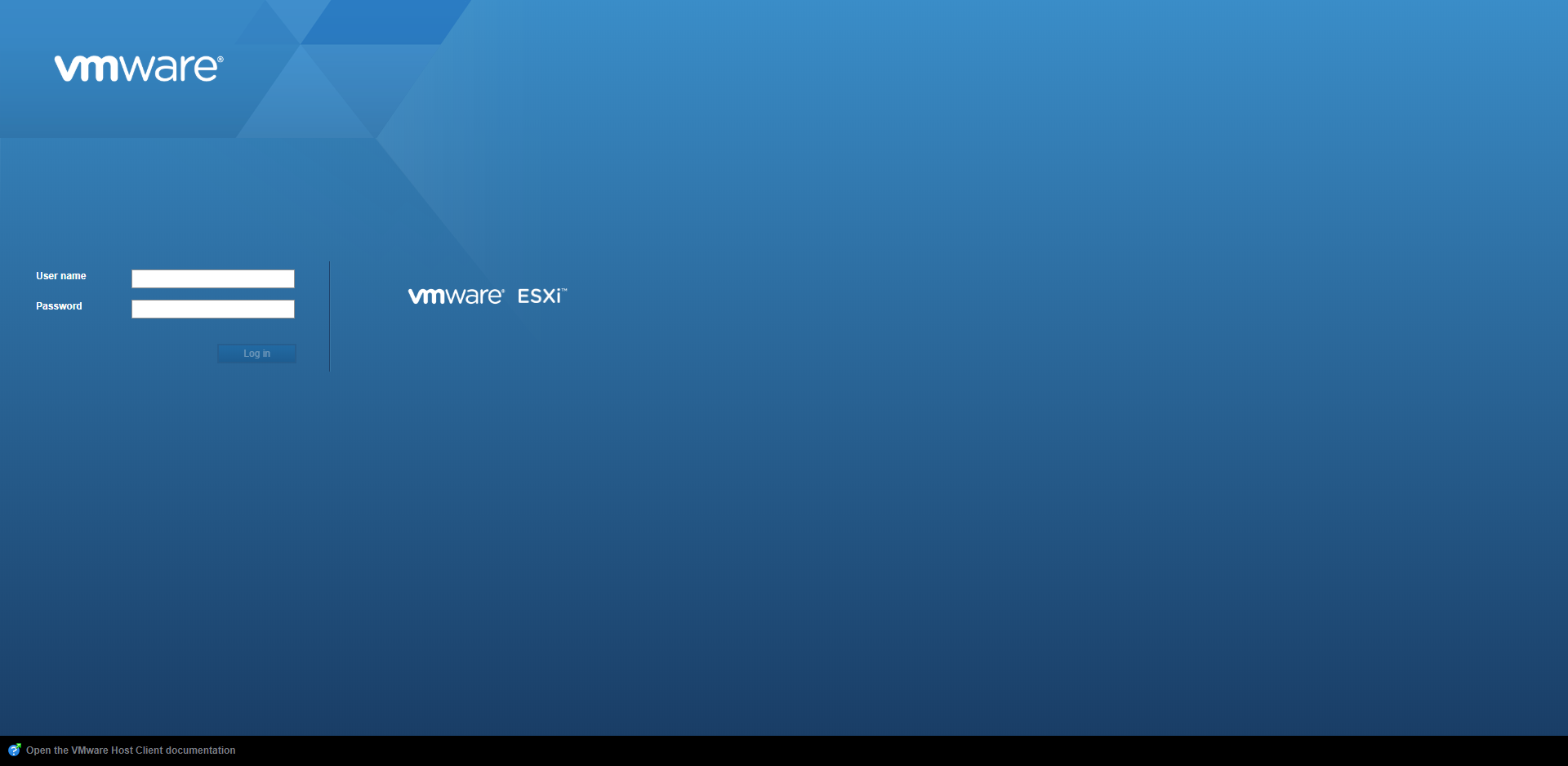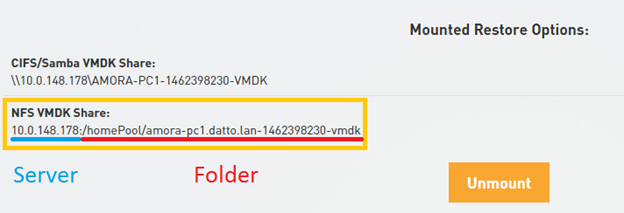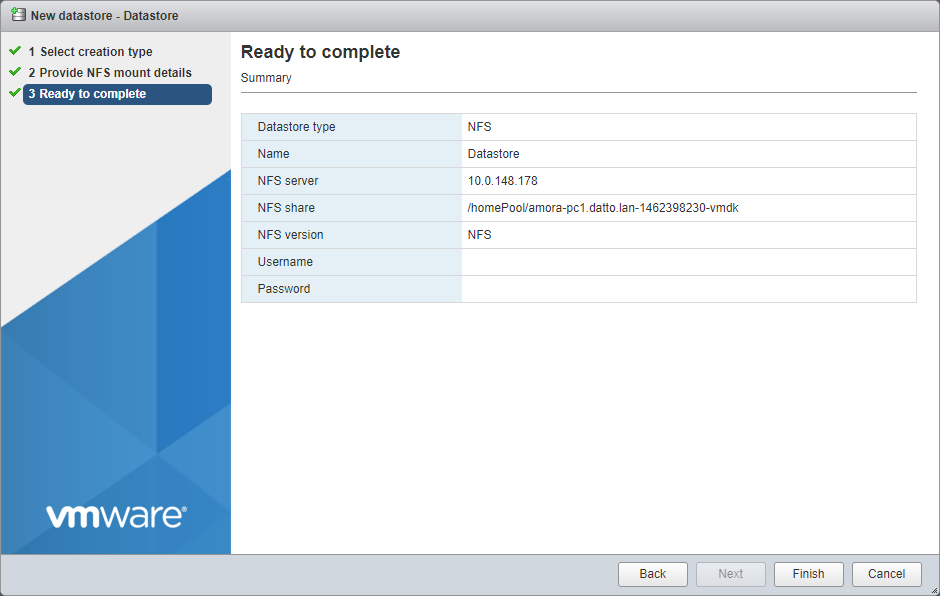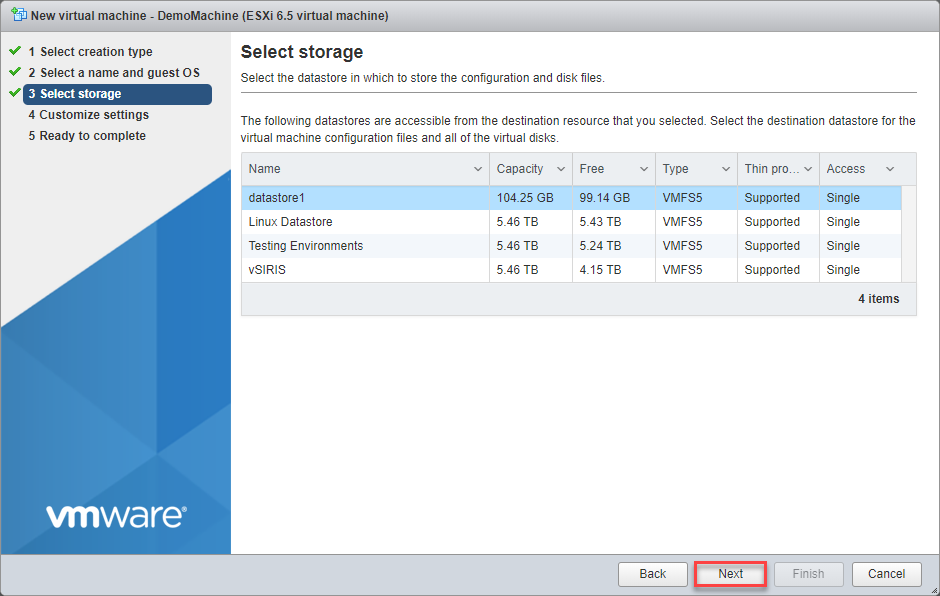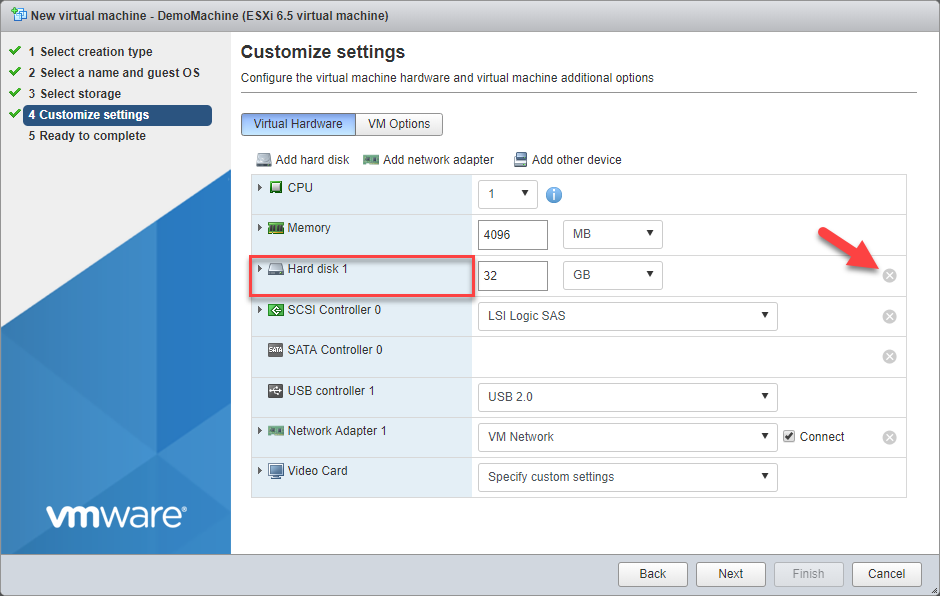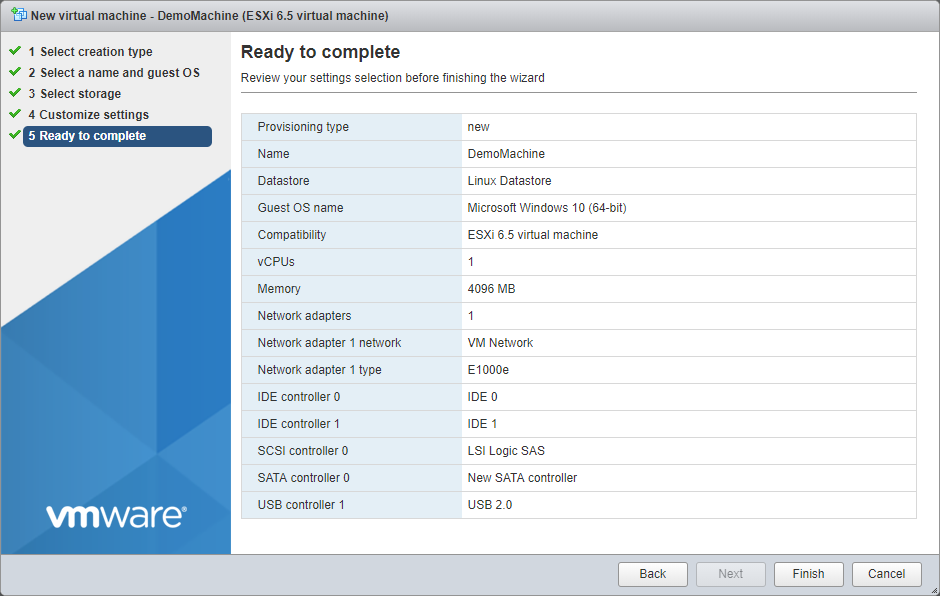Adding an NFS share from a Datto appliance to VMware / Virtual machine creation
This article provides walkthroughs for adding an NFS share from a Datto appliance to VMware as a datastore, and for creating a new virtual machine in ESXi.
Environment
- Datto ALTO
- Datto SIRIS
- VMware ESXi
Description
- Technical Notes
- Adding a NFS Share from the Datto Appliance to VMware ESXi as a Datastore
- Creating a New Virtual Machine in VMware ESXi
- Additional Resources
Technical notes
- If your import process requires a VMX template, and the selected snapshot originated from a protected agentless system, you can find a copy of the virtual machine's configuration, as it existed at the time of the backup, in the Image Export files. The file is named configuration.vmx. Before using it, Datto recommends reviewing and updating its contents to ensure that the naming conventions it uses, particularly as they relate to disk names, match your current production environment.
- When creating the virtual machine, if you see a boot.vmdk file in the export, this needs to be the first disk in your boot sequence, followed by C.vmdk.
- Before performing this procedure, you must follow the steps in the Export Image article to make the VMDK export available on the network via NFS.
- Do NOT use the "upload file/folder" button on the datastore browser to upload the VMDK and .datto image file to your VMware ESXi environment. This could prevent certain features from working on a virtual machine associated with these files. Instead, follow the process described in Restoring a Thin-Provisioned Image Export to VMware vSphere or Restoring a Thick-Provisioned Image Export to VMware vSphere to perform the upload.
Adding a NFS Share from the Datto appliance to VMware ESXi as a datastore
- Navigate to your VMware ESXi landing page, and log in.
- Once logged in to the ESXi environment, click Storage.
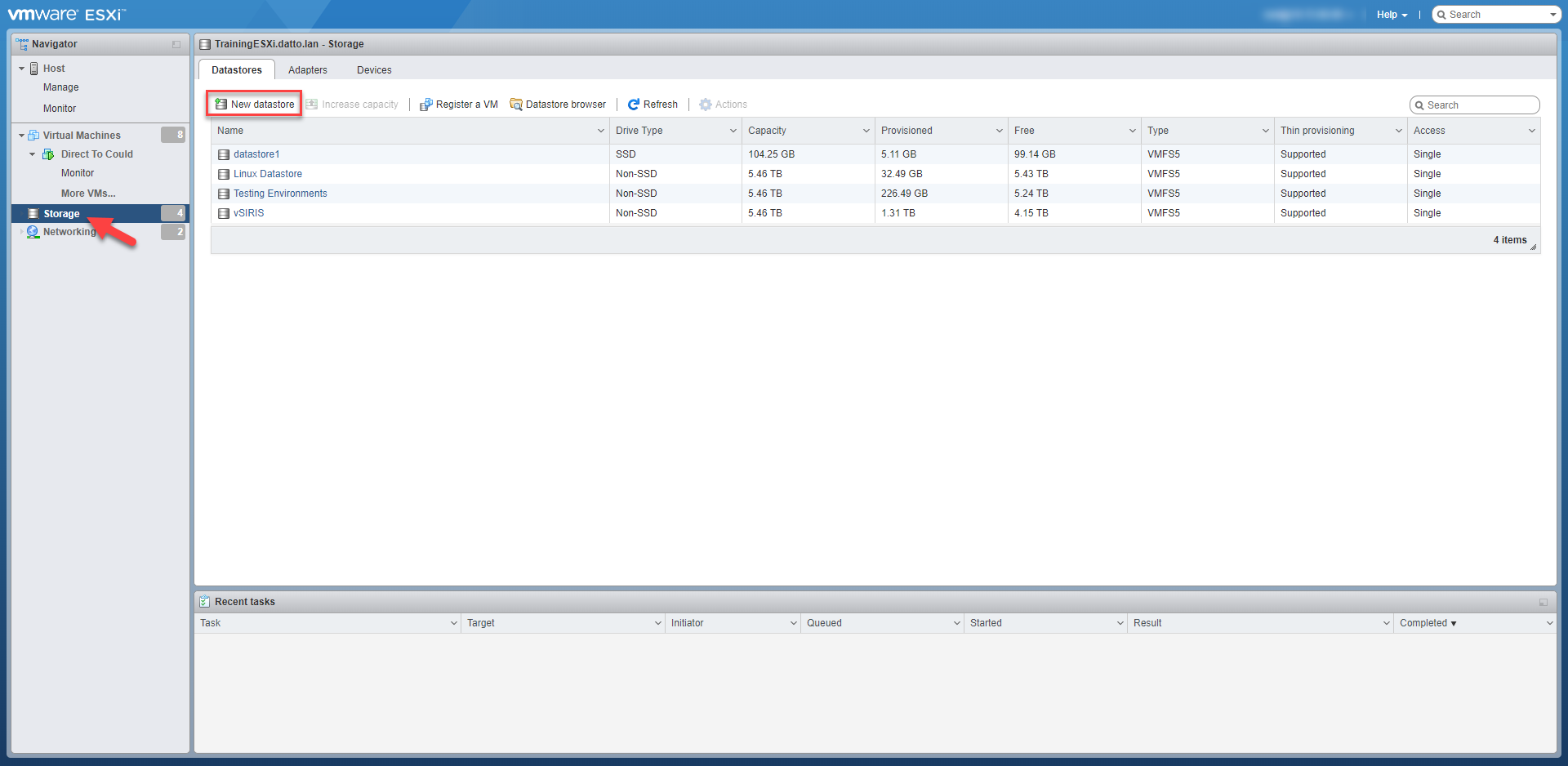
Figure 2: Selecting the Storage option in VMware ESXi
- Click New Datastore.
- Select Mount NFS datastore, and then click Next.
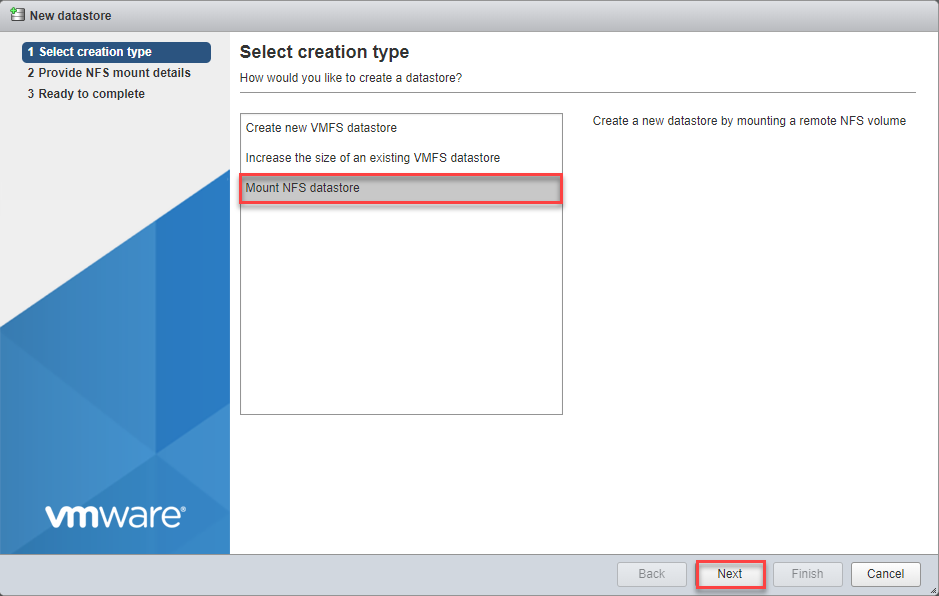
Figure 3: Select creation type > Mount NFS datastore
- In the Provide NFS mount details step, you can name the datastore anything you like. The default used in this example is Datastore. For the NFS version, choose NFS 4.
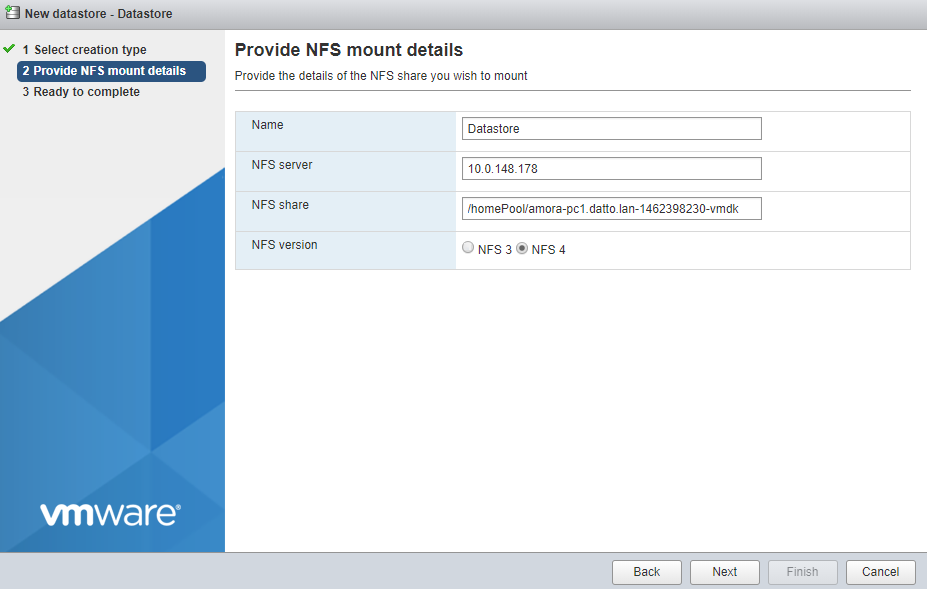
Figure 4: Provide NFS mount details
You can find the Server and Folder parameters on the Datto appliance, at the Manage Restore page of the VMDK export you created. The Server parameter is the IP address to the left of the colon. The Folder parameter is the full path to the right of the colon. If your host is connecting to the Datto appliance on a different subnet, the Server IP is the interface on the device configured to that subnet, as shown in the below example. Select NFS 4 as the NFS version.
- Check the configuration, and click Finish to create the datastore.
Creating a new virtual machine in VMware ESXi
NOTE You can skip this process if your VM was not destroyed
- In the left-hand pane of ESXi, click Virtual Machines > Create / Register VM.
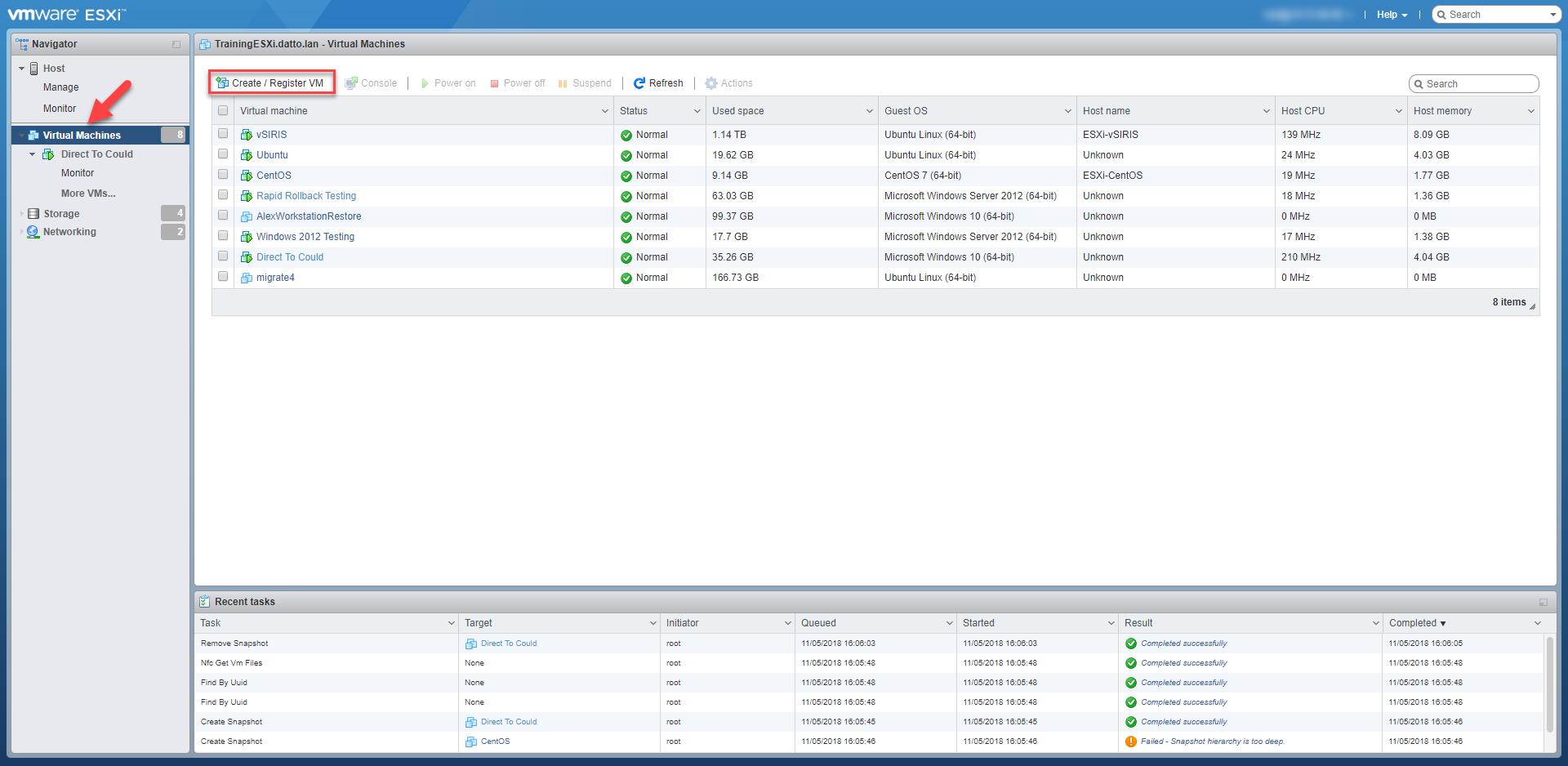
Figure 6: Virtual Machines > Create / Register VM
- In the New virtual machine wizard, select Create a new virtual machine, and then click Next.
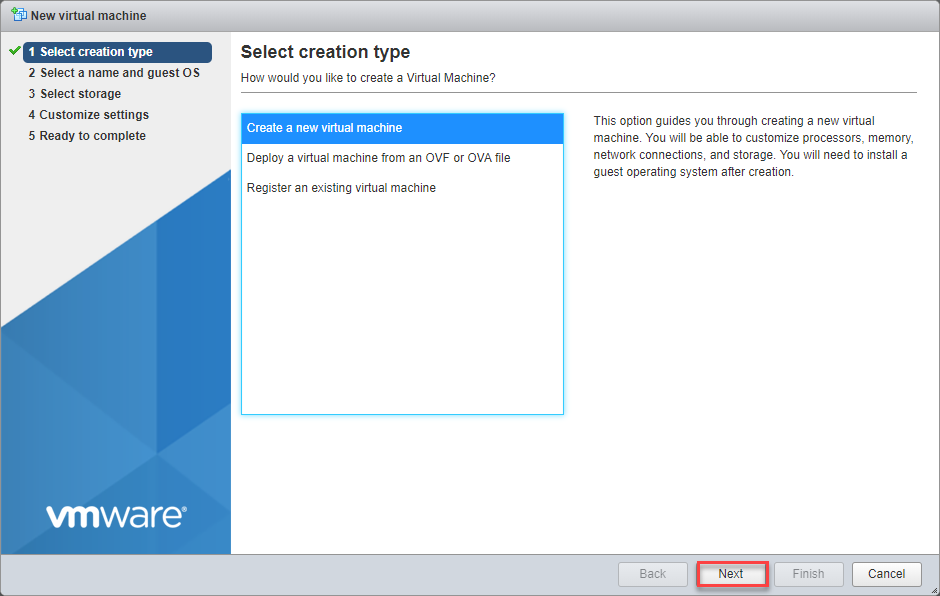
Figure 7: Select creation type
- Complete the following fields:
- Name: Enter a display name for the virtual machine. You can enter any value.
- Compatibility: Select the version of ESXi that you need your virtual machine to be compatible with. Typically, the current version that you are using in your environment will provide the best compatibility.
- Guest OS family: Select the operating system type (Windows, Linux, Mac, or Other) for the VM.
- Guest OS version: Select the operating system version for the VM.
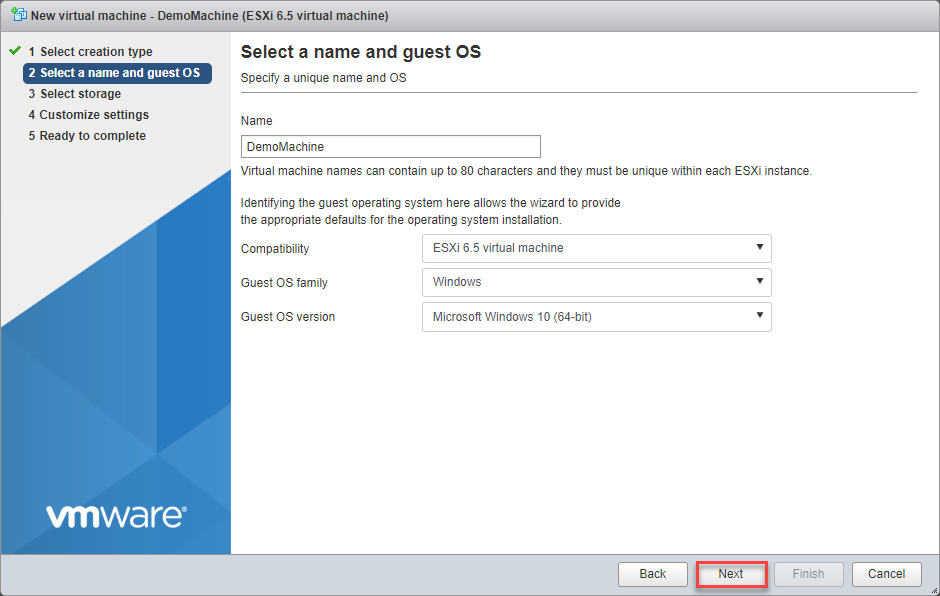
Figure 8: Select a name and guest OS
- Click Next to continue.
- Select the datastore you'd like to use for the VM. Then, click Next to continue.
NOTE If you created an NFS datastore earlier in this process, do not select it during this stage.
- Configure the VM to meet your needs. If necessary, add or delete hard disks. When you finish customizing the VM, click Next.
- Review your virtual machine settings on the Ready to complete page.
- If you are satisfied with your virtual machine settings, click Finish.
- Continue the restoration process you were following which led to the virtual machine creation.
